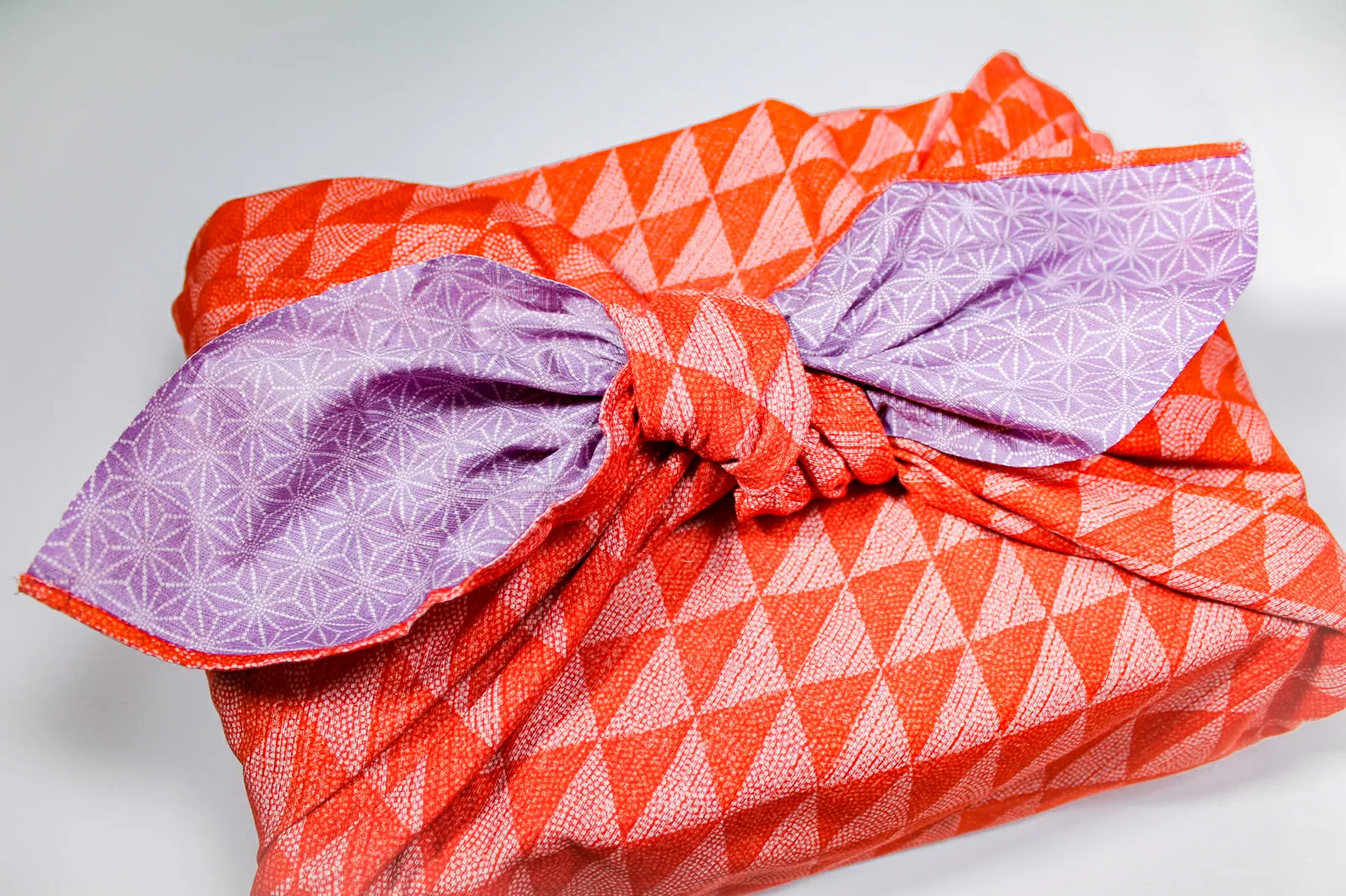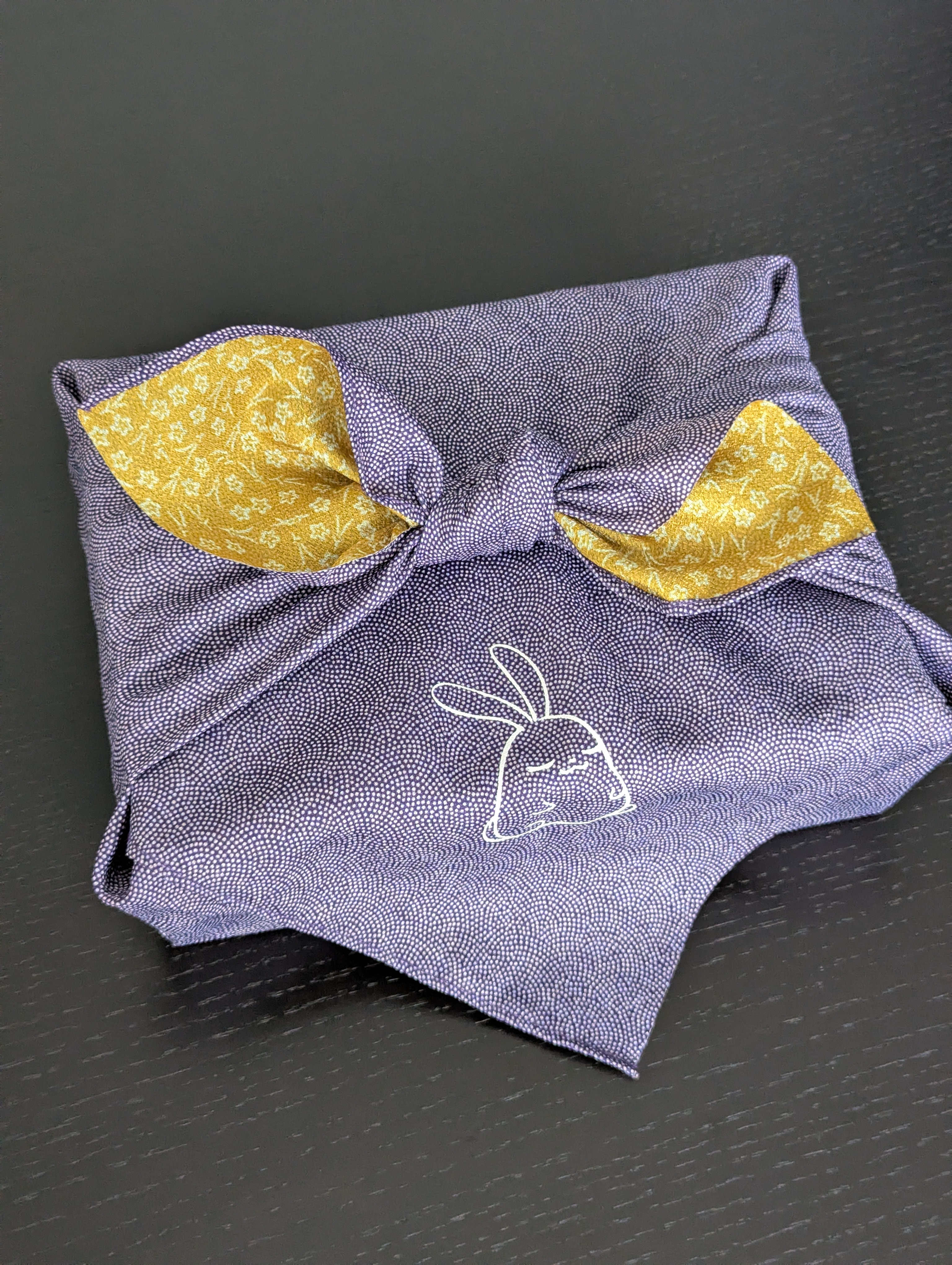
Furoshiki and Japanese Gift Culture | A Guide to Traditional Gift Wrapping
The Thoughtful Spirit of Japanese Gift Culture
In Japan, gift-giving is more than a simple exchange, it’s a reflection of care, gratitude, and respect. From seasonal greetings to thank-you presents, the act of wrapping a gift is just as meaningful as the gift itself. Every fold, knot, and layer carries intention, transforming even the simplest item into a moment of thoughtfulness.
Among the many ways gifts are wrapped in Japan, one tradition stands out for its elegance and sustainability: furoshiki (風呂敷).
What Is Furoshiki?
Furoshiki are square pieces of fabric used for wrapping and carrying items. The word comes from furo (bath) and shiki (to spread), tracing back to the Nara period (710–794) when cloths were used to protect valuables in bathhouses. Over time, they evolved from functional cloths to an artful means of presentation and transport.

During the Edo period (1603–1868), furoshiki became common among merchants and travelers who used them to bundle clothing or goods neatly. They were often decorated with family crests or seasonal motifs, blending practicality with personal expression.
Today, furoshiki are making a quiet comeback — not only as part of Japanese gift culture, but also as a sustainable alternative to paper wrapping. Reusable, versatile, and visually charming, they embody the Japanese spirit of mottainai (not wasting what still has value).
How Furoshiki Are Used Today

Modern furoshiki come in various sizes, fabrics, and designs — from cotton and silk to recycled polyester. They can be used for much more than wrapping gifts:
- As eco-friendly shopping bags (by tying corners together)
- To wrap lunch boxes or bottles
- As home décor, such as table runners or wall hangings
- To wrap and protect books, accessories, or personal items
This versatility makes furoshiki not only a cultural tradition but also a timeless tool for mindful living.
Furoshiki Sizes and Their Everyday Uses

One of the most charming aspects of furoshiki is how each size has a traditional and practical use. Here’s a simple guide:
← Scroll sideways if needed on mobile →
Many brands also produce mini furoshiki (under 40 cm) for decorative wrapping and oversized furoshiki (over 120 cm) for use as picnic cloths or interior décor.
By choosing the right size, each wrap becomes both beautiful and functional — a hallmark of Japanese design philosophy.
BONUS: ZenPop Original Luna Furoshiki
Our ZenPop Original Luna Furoshiki comes in a 70cm × 70cm size — perfect for most general wrapping and everyday uses. Take a look and see how you can bring one home.
How to Wrap with Furoshiki
Wrapping with furoshiki is both simple and delightful once you know the basics. Almost every wrapping style (from elegant gift folds to functional carry bags) begins with two essential knots. Once you master these, you can transform a single square of fabric into something both beautiful and practical.
1. The Single Knot (Hito-tsu Musubi)
The single knot is the simplest and most versatile way to secure your furoshiki.

To tie it, make a small loop with one end of the cloth and pass the other end through the loop. Gently pull to tighten while holding the knot in place. This knot works well for quick wrapping, fastening corners, or creating small handles for carrying.
2. The Square Knot (Ma-musubi)
The square knot is the traditional and most stable knot used in furoshiki wrapping.

Start by crossing the two ends of the cloth. Fold the ends closest to you downward horizontally, then bring the opposite end forward and pass it through the loop. Pull both ends evenly to tighten, ensuring the knot lies flat and horizontal like a leaf.
You can easily untie it too.

With just these two knots, you can wrap, carry, or decorate nearly anything — bringing a touch of Japanese artistry to everyday life.
Learn Two Easy Furoshiki Styles (Bag + Gift Wrap)
Here are two easy video guides to help you start using furoshiki in your everyday life — one for wrapping a gift, and one for turning your cloth into a simple bag.
How to Wrap a Gift with Furoshiki
How to Make a Furoshiki Bag in 15 Seconds
Tips for Using Furoshiki

Choose the right fabric
Cotton or linen furoshiki are easy to tie and perfect for beginners, while silk or satin adds a luxurious touch for special gifts. Recycled polyester options are great for everyday use and resist wrinkles.
Remember — fabric and texture matter.
In Japan, the choice of material can subtly reflect the rank or importance of a gift. A silky or finely woven furoshiki conveys elegance and respect, while a casual cotton wrap gives a warm, friendly feel. Choosing the right texture helps communicate your intention without words.
Match the size to your purpose
A small 45–55 cm cloth suits compact items like accessories or snacks, while larger 70–90 cm cloths are perfect for books, boxes, or bottles. Oversized 100–120 cm furoshiki can even double as eco-friendly bags or wraps for clothes.
Coordinate colors and patterns
In Japanese gift culture, harmony in presentation is part of the message. Soft pastel tones convey calmness and care, while vibrant patterns express celebration and joy.
Mind your folds and corners
Smooth out wrinkles and tuck in corners neatly. Each fold reflects the giver’s attentiveness, turning a simple cloth into a form of gentle respect.
Reuse and repurpose
Furoshiki are meant to be used again and again — for wrapping, carrying, or even as décor. They embody mottainai, the spirit of not letting things go to waste.
Add a personal touch
Slip in a dried flower, a small card, or a decorative knot to make your wrapping feel extra warm and personal.
Keep learning new folds
From bottle wraps to handbag styles, every knot tells a new story. Try new shapes — you might find a fold that feels uniquely yours.
A Gift That Carries More Than It Holds
Furoshiki teaches us that beauty lies in the small details — in taking the time to wrap something with care and meaning. Whether it’s a box of sweets, a handwritten note, or a thoughtful souvenir, using furoshiki turns a gift into a story.
Through this simple piece of cloth, Japanese gift wrapping becomes a gentle reminder: that kindness, when wrapped with sincerity, never goes unnoticed.
